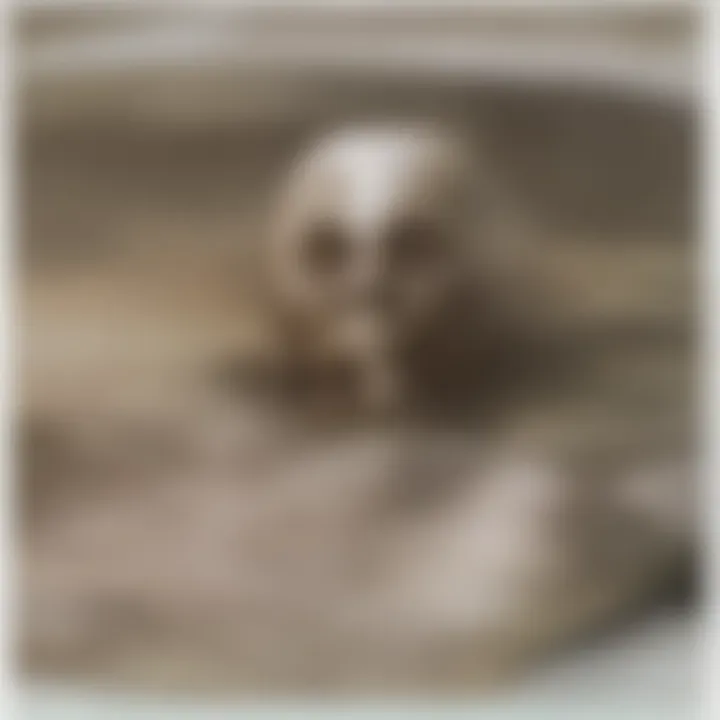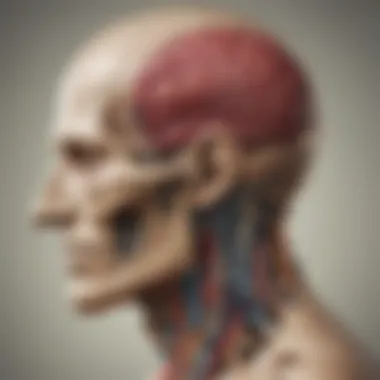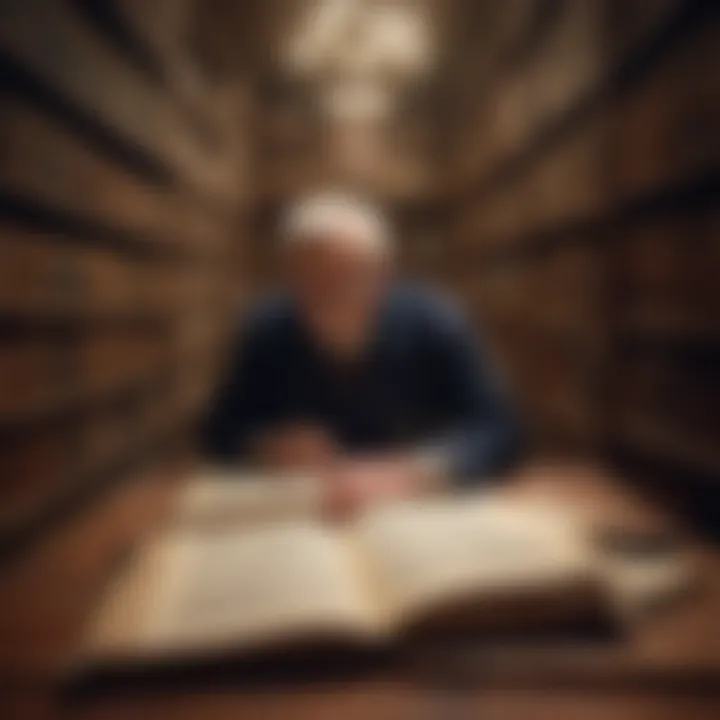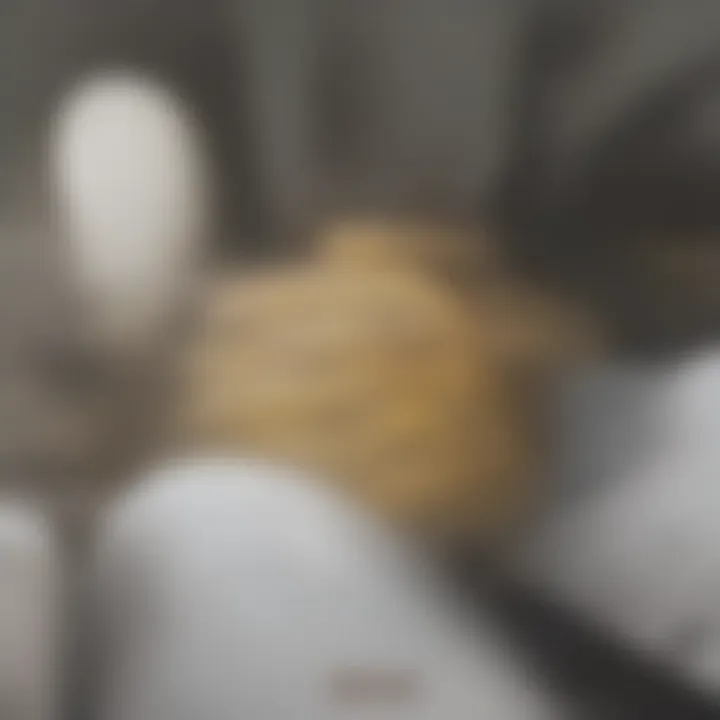Exploring Antique Medical Books: Insights and Significance


Intro
Antique medical books represent a treasure trove of knowledge and history. They provide a unique lens through which we can understand the evolution of medical practices and the cultural context of their times. These texts not only document the scientific advancements of the past but also reflect the societal attitudes towards health and treatment. In exploring this niche yet fascinating field, we uncover how these artifacts contribute to our comprehension of medicine today.
The study of antique medical books goes beyond mere collection. It engages serious scholars and casual enthusiasts alike in a dialogue about medical history and the transformations in medical thought. Given this context, the significance of these texts is multifaceted, spanning education, research, and heritage preservation. This article seeks to illuminate these dimensions by examining the notable medical works, their impact, and the challenges they present to collectors and historians.
Preamble to Antique Medical Books
The world of antique medical books holds a treasure trove of knowledge and insight into the evolution of medicine. Understanding this topic is crucial, as it reveals how medical practices and theories have developed over centuries. By studying these works, one can grasp the historical context that shaped modern medicine and appreciate the intricate journey of medical thought.
Definition and Scope
Antique medical books generally refer to texts produced prior to the 20th century, including early manuscripts and printed works. These books cover various aspects of medicine, including anatomy, surgical procedures, medicinal plants, and treatment methodologies. The scope of antique medical literature is vast, encompassing works from diverse cultures and periods, such as ancient Greek, Roman, Arabic, and early modern European texts.
By examining these books, researchers and enthusiasts alike can delve into the assumptions and practices that influenced patient care and medical education of the time. The rigorous exploration of these texts allows for a comprehensive understanding of how medical knowledge has transformed and paved the way for contemporary practices.
Historical Significance
Antique medical books are not just relics; they are vital records that document the quest for knowledge throughout history. Their significance lies in several key areas:
- Cultural Insights: These books often reflect the cultural, social, and philosophical contexts in which they were written. They provide a glimpse into how societies understood health and disease at different times.
- Medical Milestones: Many texts represent important milestones in medical discoveries and theories. Works like the Hippocratic Corpus and Galen's writings offer foundational ideas that still resonate in modern practice.
- Evolution of Practices: Over time, medical practices have evolved from mystical and empirical approaches to scientific methodologies. Antique medical books highlight this shift, showcasing early treatments that, while sometimes erroneous, laid the groundwork for future advancements.
"Antique medical books serve as a bridge between past and present, illustrating the gradual we've taken toward the medical knowledge we rely on today."
In essence, the historical significance of these texts cannot be overstated. They not only reflect the medical understanding of their time but also serve as teaching tools that inform current medical practice and research.
The Evolution of Medical Knowledge
The evolution of medical knowledge reflects the gradual increase of understanding in the field of medicine. Examining this evolution is crucial because it unveils how historical texts inform current practices. Early medical works laid the foundations of what we now consider as modern medical science. By tracing the timeline from ancient texts to contemporary standards, we grasp the influence of past insights that still resonate today.
Early Medical Texts
Early medical texts form the cornerstone of medical literature. They contain medical theories, practices, and insights that defined their respective eras. For instance, the Ebers Papyrus, crafted in ancient Egypt, showcases herbal remedies and surgical practices. Such texts reveal how ancient societies perceived health and disease. Furthermore, they provide a glimpse into the cultural values surrounding medicine. While some methods appear rudimentary, they represent humanity's first step into the scientific realm.
The preservation of these texts is essential, as they serve as a reference point. Understanding the progression of thought helps medical practitioners appreciate the advancements made. Often, we find that many of today's practices have roots in these foundational works. This is especially relevant when examining holistic approaches in medicine that echo ancient methodologies.
Renaissance and Advancements


The Renaissance era was pivotal in shaping medical knowledge. The period marked a resurgence of interest in classical texts coupled with empirical investigation. Figures like Andreas Vesalius drastically transformed human anatomy through detailed dissections, challenging long-held misconceptions passed down since antiquity. His work, De humani corporis fabrica, not only corrected anatomical inaccuracies but also laid the groundwork for modern anatomy.
During this time, the printing press played a critical role. It enabled the swift dissemination of medical knowledge across Europe. Scholars could share discoveries and engage in debates, fostering a vibrant scholarly community. The accumulation of knowledge accelerated rapidly due to various influences, including contributions from both Eastern and Western medical traditions. This intermingling of thoughts enhanced the depth and scope of medical understanding.
Industrial Era Contributions
The Industrial Era introduced further complexities to medical knowledge. With advances in technology came new methods of research and practice. Medical texts from this period documented significant breakthroughs, including the introduction of anesthesia and germ theory. The work of Louis Pasteur and Robert Koch was influential in reshaping how diseases were understood and treated. Their findings were compiled into extensive medical literature, which not only educated practitioners but also informed public health policies.
Collection of antique medical books from this era is particularly valuable, as they chronicle the transition from traditional methods to evidence-based approaches. These texts serve as testimony to humanity's progress toward a deeper understanding of the human body and disease management. Preserving these works is vital for current and future scholars, as they continue to inspire ongoing research and discovery.
"The study of history is the best medicine for a sick mind." - Michael Foucault
Understanding the evolution of medical knowledge is not merely academic; it substantiates the ongoing conversation regarding ethics, advancements, and the future of healthcare. As we reflect on these rich texts, we gain insights that guide us toward improved medical practices and a comprehensive understanding of health.
Notable Antique Medical Works
Antique medical works hold a significant place within the study of medical history and the development of healthcare practices. These texts not only showcase the state of medical knowledge in their respective eras but also reflect the cultural and philosophical underpinnings of their time. Understanding these works offers unique insights into how medicine has evolved, providing collectors, scholars, and medical professionals with valuable perspectives on contemporary practices.
Hippocratic Corpus
The Hippocratic Corpus is a foundational collection of texts attributed to Hippocrates and his followers. This body of work is crucial as it laid the groundwork for systematic observation and documentation in medicine. The texts urge physicians to prioritize ethics, emphasizing the doctor-patient relationship. Notably, the famous Hippocratic Oath originates from this corpus, which continues to influence medical ethics today. Educators often reference these texts, reinforcing the importance of ethical consideration in medical training and practice.
Galen's Influence
Galen, a Roman physician whose work spanned the 2nd century, significantly impacted medical theory and practice. His writings synthesized earlier Greek medical knowledge and introduced concepts like the theory of the four humors. Galen's texts informed centuries of medical training and disciplines in Europe and the Islamic world. Despite being challenging to translate, his work remains relevant in understanding historical medical practices and philosophies. Researchers often analyze his texts to uncover how past medical thought informs modern concepts.
The Canon of Medicine
Avicenna’s "The Canon of Medicine," written in the 11th century, exemplifies a milestone in medical literature. This comprehensive text compiled various medical knowledge, from herbal remedies to surgical techniques, and served as a core textbook in medical schools throughout the Middle Ages. Its systematic classification of diseases and treatments set a precedent for future medical manuscripts. The relevance of "The Canon of Medicine" in history cannot be understated, as it served as a bridge between ancient and modern medicine.
Vesalius's De humani corporis fabrica
Andreas Vesalius’s "De humani corporis fabrica," published in 1543, marked a pivotal moment in the field of anatomy. Vesalius challenged prevailing anatomical teachings of Galen by conducting detailed dissections and observations of human bodies. The illustrations in this work are renowned for their precision and detail, laying the foundation for modern anatomy. This text remains a crucial study resource for students and professionals alike. Its historical context exemplifies the shift from reliance on ancient authorities to empirical observation in medicine.
Collecting Antique Medical Books
Collecting antique medical books serves as a crucial intersection between historical scholarship and the practice of medicine. These texts not only provide insight into the evolution of medical practices but also reflect the cultural and scientific contexts in which they were produced. The significance of collecting lies beyond mere ownership; it is an act of preservation and education, enabling future generations to understand past medical paradigms. Collectors contribute to the academic discourse surrounding medical history by curating collections that are both informative and representative of their respective time periods.


Criteria for Collecting
When embarking on a journey to collect antique medical books, understanding specific criteria becomes vital. First, the historical context of the book must be considered. Is it a milestone in medical thought, or does it provide insight into the practice of medicine during a specific era? Additionally, condition plays a significant role; books that are well-preserved often hold more value than those that are not. Factors such as rarity, authorship, and provenance also influence the desirability of a book. A well-documented history of ownership can enhance value and interest.
Assessing Authenticity
Assessing the authenticity of antique medical books is a critical step for any serious collector. Counterfeit and reproduction books exist in the market, and discerning original texts from imitations requires vigilance. Key indicators of authenticity include examining the binding, the presence of distinct publisher marks, and analyzing the paper used. Age can be verified through watermark identification and text analysis, while availability of third-party verification can be invaluable. Engaging experts in the field or utilizing reputable appraisal services can provide additional assurance of a book's authenticity.
Preservation Techniques
Preserving antique medical books requires specialized care and methods. Proper storage conditions are essential to prevent degradation. Books should be kept in a climate-controlled environment, protected from direct sunlight and humidity fluctuations. Using acid-free materials like boxes and sleeves can shield the books from environmental stressors and physical wear. Regular inspection for signs of damage or deterioration is advisable. If restoration is required, professional conservators should be engaged to ensure that the integrity of the book is maintained. These preservation techniques not only enhance the longevity of the collection but also allow for ongoing educational opportunities.
Collecting and preserving antique medical books is not merely an individual hobby; it is a commitment to preserving historical knowledge for future exploration and understanding.
Through diligent collecting, careful assessment of authenticity, and dedicated preservation techniques, collectors not only enrich their own understanding but also contribute markedly to the field of medical history.
Challenges in the Field
The exploration of antique medical books unfolds several challenges that collectors, historians, and researchers must navigate. Understanding these challenges is pivotal as they intricately affect the preservation and appreciation of these historical artifacts. The complexities involve market fluctuations, legal regulations, and the scarcity of resources. Each point presents unique dynamics that demand careful consideration.
Market Trends
Market trends in the antique book world fluctuate significantly. Interest in antique medical books has seen a resurgence, driven largely by collectors and institutions valuing the educational and historical aspects these texts offer. The prices for rare editions can reach astonishing heights, driven by rarity and demand. Collectors often find themselves competing for significant works like Andreas Vesalius's De humani corporis fabrica, which can sell for tens of thousands of dollars.
However, fluctuations can lead to uncertainty. Economic downturns may decrease demand, impacting the values of numerous titles. Collectors should stay abreast of auction results and sales to gauge both market value and trends accurately. Researching auction houses that specialize in medical texts can be beneficial. Institutions, like universities, may also play a vital role in purchasing these books for their collections, thus affecting overall trends in the market.
Legal and Ethical Considerations
Navigating the legal landscape is essential in the field of antique medical books. The provenance of a book can significantly affect its value. This involves documenting the history of ownership, which can help verify authenticity and legality. Many collectors devote significant attention to ensuring that their acquisitions do not violate laws, especially regarding the trade of rare or endangered materials.
Moreover, ethical considerations include respecting cultural heritage. Some texts may originate from regions where specific laws govern their ownership and sale. Understanding the moral implications tied to these artifacts can guide collectors in their pursuit. There is an increasing emphasis on ensuring that the acquisition and display of antique medical books promote appreciation without infringing upon heritage.
Resource Scarcity
Resource scarcity is a growing concern in the antique medical book market. As time progresses, fewer historical artifacts may remain, making existing pieces more sought after. This scarcity can lead to inflated prices and increased competition among collectors. Additionally, the digitization of collections has made some texts more accessible, but it also poses challenges for preservation. Understanding when to prioritize physical authenticity over digital copies is crucial.
Many institutions face challenges in acquiring and preserving these texts due to limited funding and resources. This limitation impacts their ability to conserve existing collections and acquire new ones. Institutions must develop strategic partnerships to enhance their resources. Engaging private collectors and academic institutions can foster collaborations that support the preservation and availability of these essential texts.


"Antique medical books not only tell the story of medicine but also of humanity itself. With every page, we delve into our past, and preserving this legacy becomes paramount."
Impact on Modern Medicine
The impact of antique medical books on contemporary medicine is profound. These texts provide a crucial lens through which we can understand the evolution of medical thought and practice. They serve as the foundation for many current methodologies, principles, and therapeutic approaches. Recognizing this impact is essential for anyone engaged in the medical field, as it informs the way practitioners understand and apply medical knowledge today.
Influence on Current Medical Practices
Antique medical books, such as the Hippocratic Corpus and The Canon of Medicine, laid the groundwork for diagnostic and treatment practices that persist in modern medicine. Many principles of patient examination and historical methods of treatment still echo in today’s clinical settings. For instance, Galen’s writings on anatomy and physiology are integral to our understanding of the human body.
- These books contribute to:
- Understanding traditions: Practitioners can learn how historical cultural beliefs shaped medical practices, helping to understand the roots of certain techniques still in use.
- Guiding present practices: Many concepts in today’s medical environment stem directly from ideas first observed in these historical texts.
- Establishing a dialogue: Engaging with the past promotes a continuous conversation about what constitutes effective therapy.
By studying these works, healthcare professionals gain insight into the rationale behind certain practices. It also prompts reassessment of current practices, encouraging innovation while also respecting traditional methods and knowledge.
Educational Relevance
Antique medical books are not just relics; they are vital educational tools. They introduce students and practitioners alike to the historical context of modern medicine, promoting a deeper understanding of how medical knowledge has progressed. The educational relevance of these books can be observed in several ways:
- Curricula enhancement: Many medical schools now incorporate historical texts into their courses to provide students with a broader perspective on medical theories and evolution. This practice enriches their learning experience.
- Critical thinking: Analyzing historical practices challenges students to think critically about the information they are taught and encourages them to question accepted norms in the medical field.
- Interdisciplinary studies: Understanding the context in which these texts were written often requires knowledge from fields such as history, philosophy, and sociology, making them valuable for interdisciplinary studies.
"Historical texts challenge us to explore not just how medicine has developed, but why certain methods endure while others fade away."
The integration of antique medical books aids in cultivating informed practitioners who appreciate the nuanced journey of medical knowledge from past to present. This insight into history is crucial as medicine continues to evolve, driven by new discoveries, technology, and an ever-deepening understanding of health and disease.
End and Future Directions
The exploration of antique medical books reveals a rich tapestry of knowledge and cultural significance. These texts serve not only as artifacts of medical history but also as foundational pillars that have shaped modern medical practice. Their preservation becomes essential, not just for historians but for current and future medical practitioners. While many antique medical books may seem outdated, they provide invaluable insights into the medical thought processes of their time, thus bridging the gap between past and present understanding of health and disease.
Researchers and collectors play a critical role in ensuring that this historical knowledge is maintained. The significance of antique medical books extends beyond individual collections; they embody the evolution of medical science and facilitate a deeper understanding of contemporary practices. Preserving these texts involves careful archival methods, including climate-controlled environments and digitization efforts, thus making them accessible to a wider audience.
Preserving Historical Knowledge
Preservation is a multifaceted endeavor that requires concerted efforts from libraries, institutions, and individuals. The importance of maintaining antique medical books cannot be overstated. They are not mere relics but are imbued with knowledge that can inform modern medical and ethical practices. One way to preserve this knowledge is through digitization, which allows these texts to be replicated and shared globally without risking damage to the originals.
In addition to digital formats, physical preservation is critical. This includes the use of specialized storage solutions that protect from humidity, light, and temperature fluctuations. Furthermore, preserving the provenance of each book can aid in understanding the historical context and relevance of the material, thus enriching future research.
"Preserving historical knowledge is akin to safeguarding a conversation between past and future."
Ongoing Research Opportunities
A wealth of research opportunities exists in the study of antique medical books. Scholars can delve into various avenues such as the cultural impact of medical texts on society or tracing the development of specific medical practices through these historical documents. Additionally, interdisciplinary studies that incorporate literature, sociology, and the philosophy of science could yield fascinating insights into how medicine was understood and practiced across different eras.
The integration of modern technology, such as machine learning and data mining, can enhance research capabilities significantly. By creating databases that catalog various antique medical texts, researchers can analyze patterns, linguistic changes, and the dissemination of medical knowledge more effectively.







